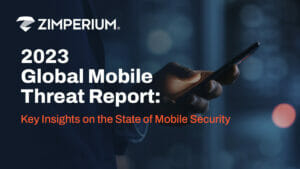
Malware-as-a-Service (MaaS) is a cybercriminal business model in which malware creators rent out or sell their malicious software and services. It operates similarly to legitimate software-as-a-service (SaaS) models. MaaS presents a significant cybersecurity risk as it significantly lowers the barrier to entry for engaging in cybercrime, allowing individuals without advanced technical skills to launch sophisticated attacks.
Here are some critical aspects of MaaS:
- Services Offered: MaaS offerings can include various malware types, such as ransomware, spyware, botnets, and Trojans. These services often provide customers with updates, customer support, and even user-friendly malware management interfaces.
- Subscription Models: Similar to legitimate SaaS, MaaS providers may offer subscription-based models. Users pay a regular fee to access the malware, receive updates, and sometimes even get customer support.
- Customization and Scalability: Some MaaS platforms allow customers to customize the malware according to their specific targets or objectives. Customization can include setting up payloads, choosing encryption methods for ransomware, or specifying the type of data to be stolen.
- Distribution Channels: MaaS providers may also offer distribution services, such as sending phishing emails, exploiting vulnerabilities in software, or even providing a network of already-compromised machines to spread the malware.
- Anonymity and Payment: To maintain anonymity, transactions in the MaaS ecosystem are often conducted using cryptocurrencies. Cryptocurrencies can make it difficult for law enforcement to track and prosecute such service providers and users.
- Accessibility: MaaS has democratized access to sophisticated malware, enabling even those with limited technical knowledge to launch complex cyberattacks.
From a cybersecurity perspective, the rise of MaaS represents a significant threat. It increases the volume and variety of malware in circulation and complicates the process of defending against these threats. Cybersecurity professionals must continuously evolve their strategies and tools to detect and mitigate attacks from these services. For Android and iOS application programmers, understanding the landscape of MaaS is crucial for implementing robust security measures in their applications.
Examples of Malware-as-a-Service (MaaS)
Malware as a Service (MaaS) has become a prominent part of the cybercrime ecosystem, offering easy access to sophisticated malware tools and services. Some well-known examples of MaaS demonstrate the diversity and complexity of this threat. However, it’s important to note that discussing specific MaaS platforms can be sensitive, as they involve criminal activities. Below are categories and characteristics of some notable MaaS examples without naming specific services:
Ransomware as a Service (RaaS):
- It is one of the most infamous types of MaaS.
- Allows users to deploy ransomware without extensive technical knowledge.
- Operators often offer a complete package, including the ransomware, payment collection, and even customer support, in exchange for a share of the ransom profits.
Botnet as a Service:
- Provides access to networks of infected computers (botnets) that can be used for various purposes, such as distributed denial-of-service (DDoS) attacks, spamming, or cryptocurrency mining.
- Users can rent a botnet for a specific time or task.
Spyware and Keylogger Services:
- Offers tools for espionage purposes, such as spying on individuals or organizations.
- These services can include keyloggers, screen capture tools, and other spyware that can steal sensitive information.
Exploit Kits:
- These are automated threat tools that exploit vulnerabilities in software and systems to install malware.
- Typically, they are rented out with exploits for known vulnerabilities.
Phishing as a Service:
- Provides tools and templates to create convincing phishing campaigns.
- It often includes email templates, website clones, and hosting services.
Trojan Development Kits:
- These kits enable users to create custom Trojans without extensive programming knowledge.
- They often come with a user-friendly interface and customizable features.
Credential Stuffing Services:
- Provide tools for automated attempts to access accounts using stolen usernames and passwords.
- They are often used in account takeover attacks.
These examples represent a facet of the MaaS ecosystem, catering to various illegal activities. These services’ ease of access and “professionalization” pose significant challenges to cybersecurity professionals. They necessitate a proactive, informed, and multi-layered security approach, especially in dynamic environments such as Android and iOS application development. For cybersecurity content creators, these examples can serve as case studies to illustrate the evolving nature of cyber threats and the importance of robust security measures.
Best Practices for Defending Mobile Apps from Malware-as-a-Service (MaaS)
Combating malware as a Service (MaaS) requires a multi-layered approach, especially in the context of mobile device threat defense. Here are some of the best strategies for Android and iOS application programmers to protect mobile devices against such threats:
- Regular Software Updates: Ensure that mobile operating systems and apps are regularly updated. These updates often contain security patches that address vulnerabilities that malware could exploit.
- Application Hardening: Implement application hardening techniques, such as code obfuscation and runtime protection, to make it more difficult for malware to analyze or tamper with your app.
- Secure Coding Practices: Adhere to secure coding best practices such as validating all inputs, using prepared statements to prevent SQL injection, and employing proper error handling to avoid revealing sensitive information.
- Network Security Measures: Utilize network security measures like SSL/TLS for data in transit and VPNs for secure remote access. These measures help in preventing man-in-the-middle attacks and securing data communication.
- Endpoint Protection Solutions: Deploy endpoint protection solutions specifically designed for mobile devices. These can include antivirus software, intrusion detection systems, and mobile device management (MDM) solutions.
- Behavioral Analysis: Use behavioral analysis tools to monitor for unusual activity on the device. Behavioral analysis can help in detecting malware that has bypassed other security measures.
- User Education and Awareness: Educate users about the risks of MaaS and the importance of security practices, such as not downloading apps from unofficial sources, avoiding clicking on suspicious links, and being cautious about granting app permissions.
- Sandboxing and Containerization: Sandboxing isolates apps from critical system resources and data. Containerization can also separate personal and business data on devices, reducing the risk of cross-contamination.
- Zero Trust Architecture: Implement a zero trust security model where every access request is fully authenticated, authorized, and encrypted before granting access.
- Threat Intelligence: Stay informed about the latest malware threats and trends by subscribing to threat intelligence feeds. Threat intelligence can help in proactively defending against new and emerging threats.
- API Security: Secure all APIs used by your mobile applications. Ensure that API communications are encrypted and authenticated and that API endpoints are protected against common attacks.
- Regular Security Audits and Penetration Testing: Regularly perform security audits and penetration testing of your applications and the mobile environment to identify and fix vulnerabilities.
By integrating these strategies into developing and maintaining mobile applications and systems, programmers can significantly enhance the defense against the evolving threats posed by MaaS. Remember that the effectiveness of these strategies often depends on their implementation and the continuous monitoring and updating of security measures.
Malware-as-a-Service (MaaS) Mobile Threat Defense Strategies for Android vs. iOS Apps
Protecting Android and iOS applications from malware as a Service (MaaS) attacks involves understanding each platform’s unique security architectures, threat landscapes, and developer guidelines. While there are some shared best practices, there are also distinct differences in how security is managed on Android and iOS:
Android Security:
- Open Ecosystem: Android’s open ecosystem allows for a broader range of app stores and sideloading apps, increasing the risk of malware and necessitating stringent checks on app sources and permissions.
- Fragmentation: The diversity of Android devices and OS versions can lead to fragmentation, making consistent security updates more challenging. Developers must ensure compatibility across various versions and devices.
- Customization: Android allows for more Customization, which can be a double-edged sword — offering more control to users and developers but also potentially exposing more security vulnerabilities.
- Google Play Protect: This built-in security feature scans apps for malicious behavior, but its effectiveness can vary, and it doesn’t eliminate the need for additional security measures.
- ProGuard and R8: These tools are used for code obfuscation in Android, which can help protect app code from reverse engineering.
- Runtime Permissions: Android uses a runtime permission model, which requires apps to request permissions at the point of use, offering users greater control over app permissions.
iOS Security:
- Closed Ecosystem: Apple’s closed ecosystem with apps only available from the Apple App Store (unless the device is jailbroken) generally results in a more controlled and secure environment.
- Consistent Updates: iOS devices have higher rates of OS update adoption, allowing for more consistent security across devices.
- Limited Customization: iOS offers less Customization than Android, which can limit exposure to security vulnerabilities but also restricts developer and user control.
- App Store Review Process: Apple’s stringent app review process can reduce the likelihood of distributing malware-infected apps, though it’s not infallible.
- Swift and Objective-C Security: These programming languages used for iOS development have some inherent security features, but secure coding practices are still essential.
- Data Encryption: iOS has strong data encryption capabilities, and its secure enclave for data protection is highly regarded.
Common Strategies for Both Platforms:
- Regular Software Updates: Keeping the OS and apps updated is crucial for both platforms.
- Secure Coding Practices: Following platform-specific guidelines to write secure code.
- Endpoint Protection: Using antivirus and other security solutions.
- User Education: Teaching users about safe app usage, recognizing phishing attempts, and avoiding suspicious downloads.
- Behavioral Analysis: Monitoring apps for suspicious behavior.
- API Security: Ensuring secure communication between the app and its backend services.
Key Takeaways:
- Platform-Specific Guidelines: Adhere to each platform’s unique security guidelines and best practices.
- Understanding User Behavior: Tailor security measures to the typical behaviors of users on each platform.
- Staying Informed: Keeping up with both platforms’ latest security threats and trends is essential for adequate protection against MaaS attacks.
For Android and iOS application programmers, a deep understanding of these platform-specific considerations is critical to effectively protecting applications from MaaS attacks.
